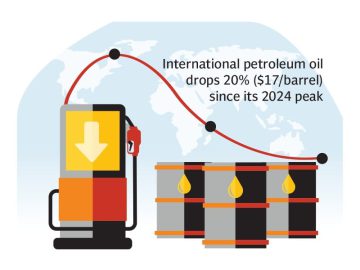Listen
NEW! Listen to article
Sign in or sign up to access this audio feature! No worries … it’s FREE!
The bad news is that marketing isn’t going to get any easier in 2024. The good news is that your marketing output is sure to improve if you use these three predictions to work both smarter and harder in the new year.
Marketers can expect to push harder in three key areas: producing video content, collecting first-party data, and keeping the human in the chatbot loop. None of those will be easy, but enterprising marketers will reap the rewards for following those trends in 2024.
Green light: Marketers go all-in on video
How popular is video content?
According to stats compiled by Oberlo:
- 91% of consumers want to see more online video content from brands.
- 66% find short-form videos to be the most engaging type of content on social media.
- 86% of marketing professionals use video as a marketing tool.
Clearly, marketers hear what their customers are saying. But in 2024, expect marketers to double- or triple-down on their video production.
Video will be ubiquitous this year and it’s easy to see why. The video channel is a powerful way to generate audience engagement, showcase products, and forge deeper connections with potential customers.
ANA predicts that livestreaming will gain prominence, “enabling real-time interaction and authenticity, as brands host live events, product launches, and behind-the-scenes experiences to deliver immersive and compelling content.”
Smart marketers take those livestreamed events, edit them down, and republish that content as recorded webinars and snippets on social media.
Another type of video will get attention in 2024 as well: video customer feedback.
Most companies survey their customers to learn what is going right or wrong about the business (NPS, CSAT, etc). But in 2024, expect more companies to collect video customer feedback in addition to typical written responses.
One interesting use case we’ve seen at Alchemer is companies’ collecting American Sign Language (ASL) feedback from their customers with speech or physical disabilities. Those customers are able to sign their feedback using the video feedback collection product in our survey platform. It’s a great feeling to be able to help an underserved community by using the power of technology to connect people.
Red light: Marketers begin to cut their ties to third-party data
Stricter privacy regulations and the decline of third-party cookies are forcing B2B marketers to take a hard look at where they source their leads. In 2024, expect marketers to begin severing their relationships with third-party data vendors and get serious about collecting first-party data.
What does that mean? HubSpot has a great overview of first-, second-, and third-party data. Suffice it to say that list-buying will be replaced with list-building. It’s a longer-term play, so some companies may ease into the transition, but the course is clear.
First-party data—data gathered directly by your company—enables marketers to personalize campaigns, build long-term customer relationships, and improve the overall customer experience.
Among the benefits of using first-party data:
- Quality and accuracy
- Control over customer data and privacy
- Data ownership
- Customization and personalization in marketing campaigns
- Improved targeting
- Cost efficiency
Third-party data comes with significant privacy concerns, primarily because it is data that organizations collect and aggregate from sources that are not their own customers or users. Some of the key privacy concerns associated with third-party data include whether the user provided explicit consent for their data to be shared, whether the data is accurate, and where the data was sourced.
Marketers know all that. But recent regulations are pushing them to do more, and more quickly.
In 2024, expect marketers to break their addiction to third-party data and get serious about collecting first-party data.
Yellow light: Marketers should use caution when deploying an AI chatbot
You’re going to hear a lot of hype about AI in the coming year. Some of it will be great and true. Some of it deserves a little caution when applied to your business.
Marketers have long been interested in chatbots, and the promise of generative AI is that someday an algorithm could solve customer queries, make sales, and reduce cart abandonment. But that day isn’t today.
Despite the interest in AI chatbots—a market that Statistica reports is expected to be worth around $454.8 million by 2027—marketers should take a cautious approach in 2024 to any chatbot that generates content at the moment of query without a human filter.
Forrester analyst Rowen Curran warned against using autonomous generative AI in chatbots in a recent What It Means podcast episode: “Currently the risk of generating content that may have a negative effect on your brand if you’re allowing the systems to create arbitrary content with no human in the loop is very, very high.”
That’s not to say AI won’t be employed by B2B marketers and their customer support counterparts. B2B marketers are using generative AI to produce content at a scale never before seen. Customer support reps can use AI to call up relevant help articles while on a call.
AI can and will be part of our marketing make-up for the foreseeable future.
But take extra caution with customer-facing generative AI. There are too many risks associated with totally autonomous AI chatbots; humans are still required.
* * *
Marketing will not get any easier in 2024, but knowing these three trends in advance will help you prepare for the year to come.
For success this year, dust off your video camera, prep for first-party data collection, and keep humans in the chatbot loop.
More Resources on Marketing Predictions and Planning
Reduce Friction With a Yearend Marketing Road Map for Smooth Sailing in 2024
Six Social Media Marketing Predictions for 2024 [Infographic]
2024 Salary Guide: Pay Forecasts for Marketing, Content, and PR Positions




